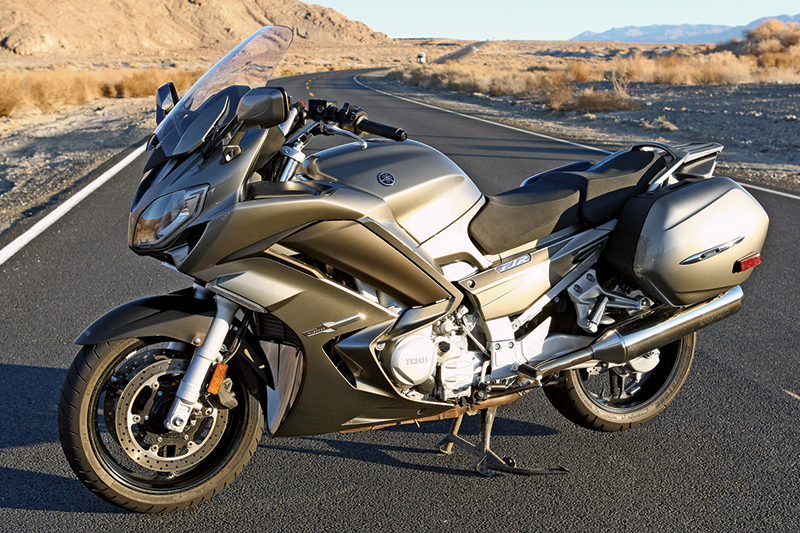2013 Yamaha FJR1300

Road Test Review
Every bike in this comparison has roots that go back decades, from the BMW R100RT in the late ’70s, to the BMW K100RT, Kawasaki Concours ZG1000 and Yamaha FJ1100 in the ’80s, to the Triumph Trophy 1200 in the early ’90s. Engines, chassis, components, tires, technology and features have improved steadily, resulting in today’s amazing, state-of-the-art sport tourers.
When the Yamaha FJR1300 was introduced for 2003, its curb weight was as light or lighter than the competition, but its liquid-cooled, fuel-injected 1,298cc in-line four cranked out 25-35 more horsepower and 18-35 more lb-ft of torque. With its final drive case adopted from the V-Max muscle cruiser, the new FJR took no prisoners. Performance plus touring prowess—standard hard saddlebags, luggage rack and electric windscreen, a 6.6-gallon fuel capacity and available ABS—earned it Rider’s Motorcycle of the Year award in 2003.
Updates in 2006 and 2008 improved engine heat management, fixed abrupt throttle response and refined the anti-lock braking system. For 2013, improvements to the engine, electronics, transmission, handling, instrumentation and ergonomics have made the FJR a better bike all-around, with a styling refresh to boot (Rider, February 2013 and on ridermagazine.com). But all of the model updates over the past decade have left the basic platform unchanged. We wouldn’t be surprised to see a major overhaul within the next few years.
At $15,890, the Yamaha FJR1300 is the least expensive bike in this test, and as one tester put it, offers the “most bang for the buck.” Riding modes, cruise control, traction control and ABS are all standard, as are heated grips. Though not the lightest bike here (at 663 pounds wet, it’s 37 pounds heavier than the BMW R 1200 RT), the FJR looks and feels the smallest, offering the most sportbike-like riding experience and the least wind protection.
